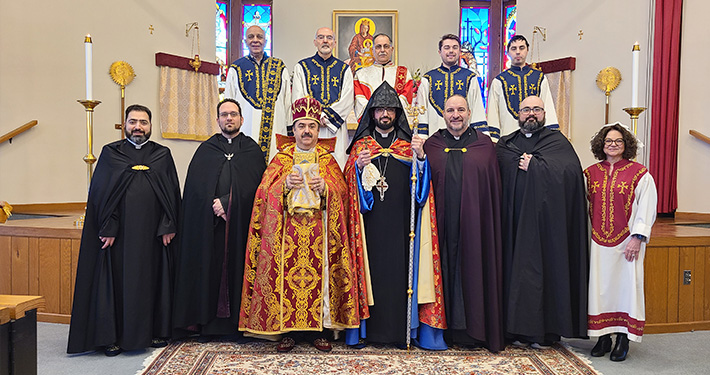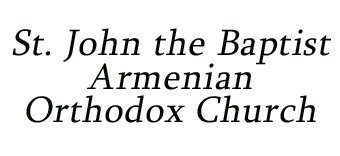VARTANANTS CELEBRATED AT ST JOHN
Thursday, February 16, 2023
By David Luhrssen
 Despite a winter storm that dropped six inches of snow on Milwaukee, St. John the Baptist Armenian Church celebrated Vartanants and Ghevontiants as planned on February 16. The event brought Midwest clergy from the Diocese and the Prelacy together in a joint observation of a pivotal event from Armenian history.
Despite a winter storm that dropped six inches of snow on Milwaukee, St. John the Baptist Armenian Church celebrated Vartanants and Ghevontiants as planned on February 16. The event brought Midwest clergy from the Diocese and the Prelacy together in a joint observation of a pivotal event from Armenian history.
Ghevontiants and Vartanants are observed each year on the Tuesday and Thursday respectively before Great Lent as a remembrance of the Battle of Avarayr (AD 451). In that year, Armenians fought for religious freedom against the Persian Empire, whose ruler sought to impose Zoroastrianism as the state religion. Militarily, the rebellious Armenians were led by a nobleman, Vartan Mamigonian, and spiritually by Ghevont, a priest who had studied under the discoverer of the Armenian alphabet and the translator of the Bible into Armenian, St. Mesrob and St. Sahag.
Vartan and Ghevont were martyred at Avarayr and canonized as saints by the Armenian Church. The Armenians lost the battle at Avarayr but won the war, remaining Orthodox Christians through their stubborn resistance to tyranny.
At St. John’s Ghevontiants and Vartanants observation, Rev. Fr. Nareg Keutelian, the parish’s former visiting pastor, celebrated the divine liturgy. St. John’s current priest, Rev. Fr. Guregh Hambardzumyan sang in a choir worthy of a great cathedral alongside Very Rev. Boghos Tinkjian (All Saints, Glenview, IL), Rev. Fr. Andreas Garabedian (St. Gregory the Illuminator, Chicago, IL), Rev. Fr. Avedis Kalayjian (St. Mesrob, Racine, WI) and Rev. Fr. Sahag Kashian (recently retired from Holy Resurrection, South Milwaukee, WI). Jan Avakian-Kopatich accompanied them on organ. Deacon Levon Saryan (St. Hagop, Racine, WI) read the Old Testament and Epistles and Deacon Tomas Ohanian, (All Saints, Glenview, IL) lead the altar servers (sub-deacons Michael & Arek Kashian, David Luhrssen) in singing.
In his sermon, Hayr Boghos reflected on Avarayr and reminded listeners that the threat to Armenian identity, culture and faith posed by the ancient Persian king remains with us today but in many and often less obvious forms, not only from external enemies but from within the global culture.
